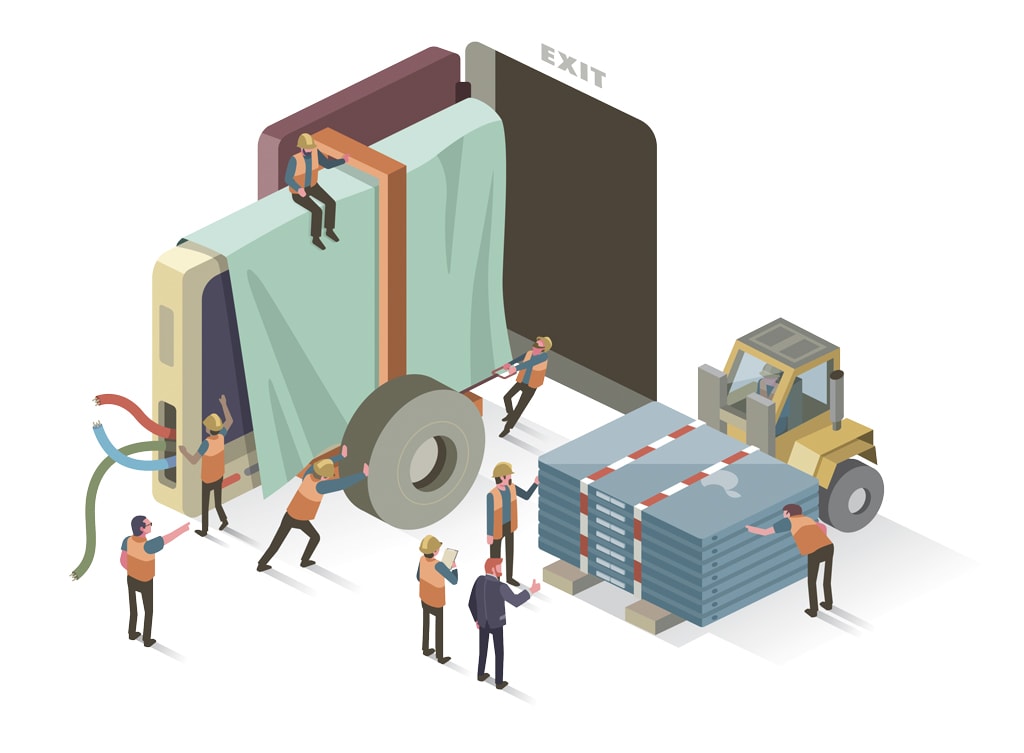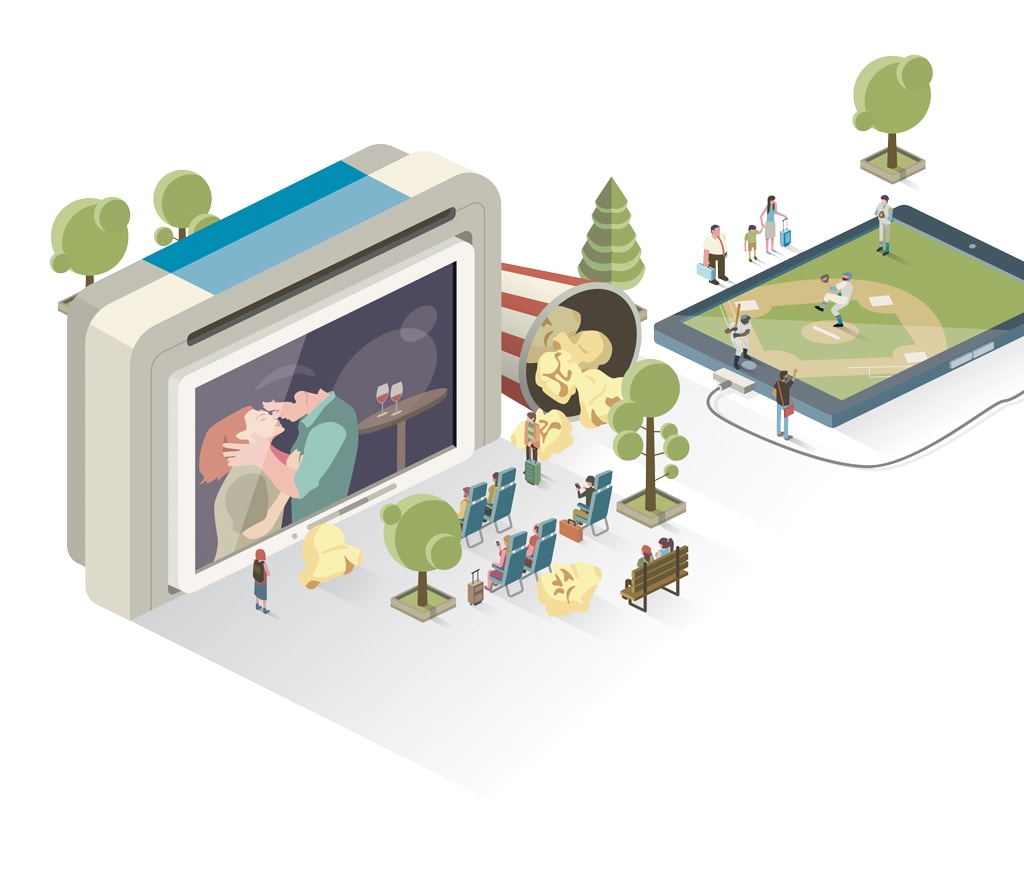Budget-Friendly Entertainment Part Two: Seatback Setbacks and Gains
Share

APEX Insight: The success of a low-cost carrier relies on lean operational expenses, keeping weight low and costs lower so that passengers can enjoy base fares. Traditionally, budget carriers have found entertainment hardware too heavy to carry, but with new technologies, this market segment is finding room for amusement. In Part Two of “Budget-Friendly Entertainment,” we weigh the pros and cons of embedded seatback screens.
For LCCs that already offer IFE via embedded seatback screens, in-flight connectivity and the BYOD phenomenon has led some to wean off the seatback – whereas for others, it hasn’t.
WestJet
Calgary-based Canadian LCC WestJet made headlines in 2014 when it announced it would begin phasing out seatback screens in favor of device-based entertainment. For the moment, the airline offers a mix of IFE options, depending on the aircraft type and route. Most B737 aircraft operating within Canada still offer seatback-embedded IFE with live television programming provided by Bell TV.
More than 80% of WestJet’s passengers bring their own device on board.
On domestic flights over two and a half hours, passengers can also watch pay-per-view Hollywood hits. Some of WestJet’s US and international flights offer seatback entertainment with stored programs.
But with a growing network and plans to operate a mixed-fleet international service across the Atlantic, late last year WestJet introduced WestJet Connect, a Wi-Fi-based BYOD platform powered by Panasonic Avionics. The service is being rolled out on the airline’s B767-300 aircraft and Boeing Next-Generation 737 aircraft. “WestJet Connect will continue to evolve in the months and years ahead,” says Marshall Wilmot, WestJet’s senior vice-president, Marketing and Digital, on the airline’s blog.
As WestJet phases out screens and travelers adjust to the BYOD option, the airline continues to rent tablets on select flights to passengers flying without their own PEDs, but the airline says 80 percent of its customers bring their own.
 Air Transat
Air Transat
Farther east, Montreal-based Air Transat may be moving in a similar direction. The airline offers embedded IFE with touch screens on long-haul A330 aircraft, while passengers flying on A310s and B737s can enjoy one of two CinePlus app-based products.
“Our new app enables passengers to start their vacations, even before they board.” – Jean-François Lemay, Air Transat
Launched in 2014, CinePlus A lets economy passengers on A310s access content from an onboard server. With the 2016 launch of CinePlus B, powered by GEE’s Airtime Content-to-Go, those flying on Air Transat’s B737s, which have no wireless server on board, can download content prior to departure. “We care deeply about enabling our passengers to start their vacations as soon as they board their flights, and even slightly before. Our new CinePlus B app now makes that possible,” said Jean-François Lemay, general manager, Air Transat, in a press release. The airline also offers shared-screen overhead entertainment on A310 and B737 aircraft for passengers who haven’t brought their own devices.
Azul
Azul Brazilian Airlines has partnered with SKY to become the first airline in Latin America to offer live TV on board: 48 channels in all of local and international entertainment. The service is available on most of the airline’s aircraft, and content plays on seat-embedded IFE screens. To complement its live TV offering, Azul has introduced 1,100 of digEcor’s L7 portable digital players, providing passengers with a mix of movies, television and audio programs. The players are updated with new content every 60 days.
Jetstar
On the other side of the globe, Australian-carrier Jetstar’s IFE trajectory has evolved completely differently. Jetstar became the first airline to offer airline-supplied iPad-loaded entertainment to its passengers in 2011. Working with Bluebox Avionics, Bluebox iPads came preloaded with a range of television shows, games, music, e-books and e-magazines, as well as early-window movies. Economy passengers could watch the iPads for a fee on flights longer than two hours and they were offered free to the airline’s business-class passengers.
After testing a streaming service in 2014, the airline has elected to only offer embedded seatback entertainment on its long-haul B787 Dreamliners for the time being.
But owing to a drop in demand for the iPads on shorter flights, Jetstar has since discontinued the service. And after testing a streaming service in 2014, the airline has elected to only offer Panasonic X Series embedded seatback entertainment on its long-haul B787 Dreamliners for the time being. The entertainment system features a large catalog of films, TV shows and games that are sold on board or can be pre-booked online at a discount. The airline says it’s considering offering onboard Wi-Fi in the future.
Norwegian
Norwegian Air Shuttle has differentiated its brand from European low-cost competitors by offering relatively premium short-haul and long-haul entertainment services.
Passengers on most of Norwegian’s European routes can stream entertainment through the airline’s wireless portal, which includes both wireless video-on-demand and high-speed Internet access. Customers have to pay ‚¬5 per program selection, but whatever content they purchase is available on their devices for 24 hours, granted the customer remains connected to Norwegian’s Wi-Fi. They can even enjoy the content on their next flight if they still have time remaining on their subscription. Most of Norwegian’s European flights also offer live TV streaming to passenger devices, first introduced last year and powered by RiksTV and GEE.
While Norwegian was the first airline in Europe to introduce free high-speed Wi-Fi on board – a service that has been very popular with its customers – the airline does not provide connectivity on long-haul flights. Norwegian offers a rich selection of seatback entertainment to make up for that. Passengers flying on the airline’s long-haul Dreamliner aircraft can enjoy Panasonic AVOD-embedded IFE.
flydubai
Flydubai has openly opined on the prohibitive costs of seatback hardware. “IFE is very popular with passengers, but the traditional systems were prohibitively expensive for us as a low-cost carrier,” said Ghaith Al Ghaith, the airline’s CEO, in 2010. But he credits Lumexis’ innovations in lightweight hardware with making it a viable option. “The Fiber-to-the-Screen system from Lumexis is revolutionary because it uses fiber optics rather than traditional copper piping,” Al Ghaith explains. “This significantly reduces the cost of the system overall, and makes it far lighter than other IFE systems in use today. Any reduction in weight reduces our fuel costs and therefore ensures we can keep our ticket prices low.”
The airline has recently announced a fleet-wide deployment of GEE’s Airconnect system on its B737s, which will stream live television content to passenger devices.
This story was originally published in the June/July issue of APEX Experience magazine.


